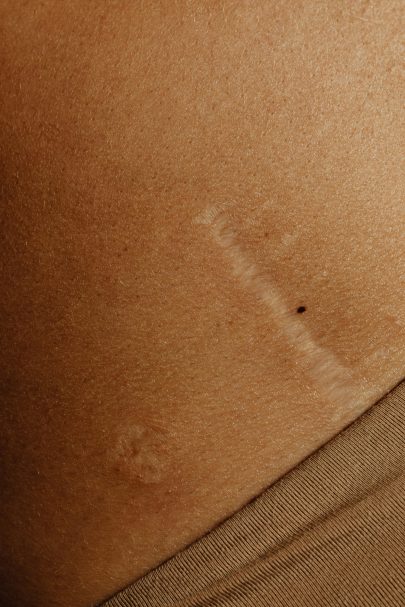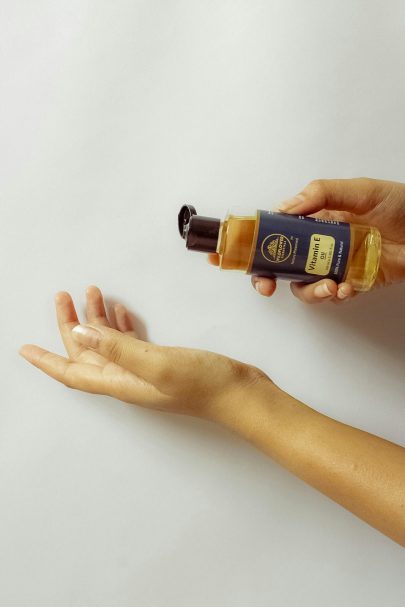We all have at least one scar. Some feel like a story worth keeping, others are the first thing you notice in the mirror. The honest truth is that scars are permanent, but their texture and colour can improve a lot with smart, consistent care. Here is how to help them fade at home, what really moves the needle, and the myths you can skip.
ALSO SEE: Is Glutathione The Secret to Youthful Skin? Benefits, Risks and Safe Use
First, know your scar type
-
Atrophic scars sit lower than the surrounding skin. Think indented acne marks, ice-pick or boxcar scars, or a sunken surgical line.
-
Hypertrophic scars and keloids are raised. Hypertrophic scars stay within the original wound, while keloids can grow beyond it and may feel itchy or firm.
Knowing the type helps you choose the right tactics and set realistic expectations.

Pexels
Daily habits that help any scar
-
Sun protection, every day. UV darkens scars and keeps redness hanging around. Use a broad-spectrum SPF on face and body and reapply if you are outdoors.
-
Hands off. Do not pick scabs, squeeze spots, or scratch healing skin. That extra trauma is a fast track to more visible scarring and pigmentation.
-
Gentle cleansing, no harsh scrubs. Over-exfoliating inflames the area and slows progress.
-
Moisturise. Hydrated skin functions better and looks smoother, which softens the appearance of texture.
Targeted at-home options that actually help
For indented or atrophic scars
-
Support collagen over time. Topical retinoids are the best studied home option for encouraging new collagen and improving overall skin quality. Start slowly and use at night with moisturiser.
-
LED red light devices. Consistent use may nudge collagen production and calm inflammation. Results build gradually.
-
Prevent new marks. If you are acne-prone, keep breakouts controlled to stop future scarring.
These approaches refine skin and soften edges, but very deep indents usually need in-clinic options like microneedling or lasers for bigger changes.
For raised or hypertrophic scars and keloids
-
Silicone sheets or gels. Used for hours daily on a healing scar, silicone helps trap hydration, reduces itch, and can flatten raised tissue. Best started once the wound has closed and any stitches are out, then continued for weeks to months.
-
Massage and gentle pressure. Once your clinician says the area has healed, daily circular massage can help remodel collagen. Compression garments or pressure earrings for lobes are sometimes used to maintain flattening.
If a raised scar is very firm, painful, or growing, speak to a professional. Injections and other medical treatments are often needed for meaningful change.
If colour is the main issue
Scars can be red, darker than your skin, or pale.
-
Redness often settles with time. SPF is essential. Light-based treatments help in clinic, but at home you can reduce irritation and keep the barrier strong.
-
Post-inflammatory hyperpigmentation tends to fade. Ingredients like vitamin C, azelaic acid and niacinamide support a more even tone when used consistently with sunscreen.
-
Very pale scars are harder to influence at home since they lack pigment. Focus on softening texture and protecting from sun so contrast is minimised.

Myths to ignore
-
“Vitamin E oil makes scars disappear.” It can irritate skin and has not shown reliable benefits for scars.
-
“Lemon juice lightens scars.” It is too harsh, increases sensitivity, and may worsen pigmentation.
-
“A miracle cream can erase a scar in weeks.” Collagen remodelling is slow. Expect months, not days.
-
“Scrubbing harder fades scars faster.” Aggressive exfoliation inflames and can deepen colour changes.
-
“If it still looks red after a month, treatment failed.” Scars can take up to 12 to 18 months to reach their final appearance.
A simple home routine
-
AM: Gentle cleanse, targeted brightener if needed, moisturiser, broad-spectrum SPF on the scar and surrounding skin.
-
PM: Gentle cleanse, retinoid on indented areas if tolerated, silicone on healing raised scars, then moisturiser.
-
Weekly: Light chemical exfoliation if your skin tolerates it, never on open or irritated skin.
-
Ongoing: Daily massage for healed raised scars, steady SPF, and patience.
When to get help
See a professional if a scar is painful, itchy, growing beyond the original wound, or affecting movement. Raised scars and deep indents respond best to a mix of medical treatments and home care.
Bottom line- You cannot delete a scar at home, but you can make it far less noticeable. Protect from the sun, keep inflammation low, support collagen slowly, use silicone for raised areas, and ignore the quick fixes. Consistency over months is what makes the difference.

